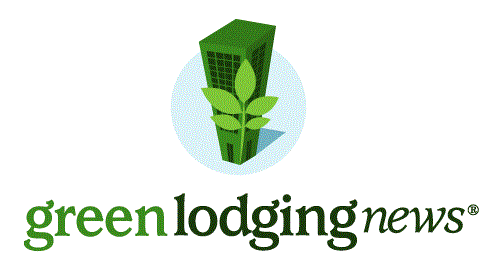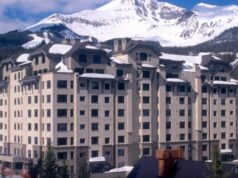PARIS—The U.S. Green Building Council (USGBC) announced today it will commit to scaling green buildings to more than 5 billion square feet (478 million square meters) over the next five years through the LEED and EDGE green building rating systems. USGBC’s commitment was made at Buildings Day, an official event at the United Nations climate negotiations conference known as COP21.
“As we gather around the imperatives to address climate change at COP21, we know that buildings must continue to be a key focus area for countries to reach carbon emissions reduction goals,” said Roger Platt, President, USGBC. “By encouraging the use of green building rating systems like LEED and EDGE in both the public and private sectors, countries can log immediate and measurable reductions of these emissions as their building stock uses less energy and water, creates less waste, saves money and creates a healthier environment for everyone.”
LEED (Leadership in Energy and Environmental Design) is the world’s most widely used green building rating system. LEED projects can be found in more than 150 countries and territories throughout the world, with more than 1.85 million square feet of space being certified every day. Designed for emerging economies, EDGE (Excellence in Design for Greater Efficiencies) is a green building certification system for new residential and commercial buildings that enables design teams and project owners in developing countries to assess the most cost effective ways to incorporate energy and water saving options into their buildings.
USGBC’s sister organization, Green Business Certification Inc., is the exclusive certification body for LEED globally and EDGE in India and also certifies EDGE projects in other countries throughout the world. GBCI oversees a portfolio of additional rating systems and programs that support carbon reductions as a way to mitigate climate change.
USGBC Goals Over Next Five Years
As part of USGBC’s commitment, over the next five years the organization is working to expand in several areas:
• Green Certified Buildings—Scale up to support certification of a projected over 5 billion square feet (478 million square meters) of green building with LEED and EDGE.
• Workforce Capacity—Expand platform worldwide for green building education, and with educational partners, double the non-English offerings.
• Finance—Advance building performance transparency metrics for the financial community, including tools for investors, lenders and underwriters through USGBC’s involvement with GRESB and other initiatives to recognize and reward green attributes in building portfolios.
• Government Policy and Strategy—Continue to advocate for and assist with the development of policies and strategies for public and private sector green building at all levels of government throughout the world.
• Measurement and Accountability—Support key tools that enable and encourage building performance transparency: the LEED Dynamic Plaque, which looks at performance feedback at the building scale; the Green Building Information Gateway (GBIG.org), which consolidates building achievement information; and benchmarking ordinances, which create accountability and incentive for improvement.
USGBC joined 25 other Green Building Councils from around the world that unveiled commitments at COP21 to transform the sustainability of buildings to reduce greenhouse gas emissions and ensure that the building and construction industry plays its part in limiting global warming to 2 degrees.
Buildings in general currently account for about one-third of global emissions, and green buildings are one of the most cost-effective solutions to climate change, by generating significant environmental, economic and societal benefits.
“USGBC has long been at the forefront of real leadership on green buildings and its ambitious commitments at these critical climate change negotiations in Paris are an excellent example of that leadership,” said Terri Wills, CEO of the World Green Building Council. “We know how to build bigger and bigger. The challenge is to build bigger and better and at the same time improve our existing buildings stock. And it is commitments like these that will underscore the critical importance of using every tool at our disposal to achieve the 2 degree world we need to ensure for our future.”
Building Council Commitments
The commitments form part of the World Green Building Council’s Better Build Green campaign, which has been focusing on COP21 and Buildings Day. A summary of the commitments:
• All 74 national Green Building Councils support the high level commitment from the World Green Building Council (the global network of which they are members) to achieve Net Zero carbon new building and energy efficient refurbishment of the existing building stock by 2050.
• Twenty-five Green Building Councils commit to register, renovate or certify over 1.25 billion square meters of green building space—almost twice the size of Singapore—and train over 127,000 qualified green building professionals by 2020.
• Three Green Building Councils (Canada, Australia and South Africa) commit to introduce Net Zero certification for buildings.
• More than 125 corporate members of Green Building Councils have made commitments, including the French product manufacturing giant Saint-Gobain, Australian developer LendLease and Swedish construction firm Skanska.
To play its part in limiting global warming to 2 degrees, the buildings sector must reduce emissions by 84 gigatonnes by 2050—the equivalent of not building 22,000 coal powered plants. WorldGBC has committed to achieving this goal by enabling a market transformation.
Go to the USGBC.







